How To Cut Stained Glass with a T-square Cutter
When we have a window with a lot of straight lines, we use a t-square cutter to cut perfectly straight lines. When windows have no curved lines, we often build the windows without needing poster board pattern pieces.
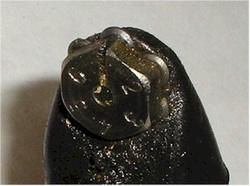
The T-square cutter or "strip" cutter has a six sided nut on it that has six different cutting blades.
When the cutting head gets dull, just turn the head from 1 to 2 or from 2 to 3 and so forth until all six blades are used up. Use a thin screwdriver to tighten the nut. You'll also find that it's easy to replace the entire set of blades.
When the cutting head gets dull, just turn the head from 1 to 2 or from 2 to 3 and so forth until all six blades are used up. Use a thin screwdriver to tighten the nut. You'll also find that it's easy to replace the entire set of blades.
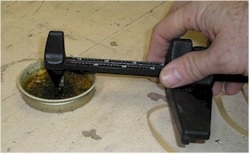
They give you that many blades because there is no reservoir to hold oil and extend the life of the blade. But if you'll dip your cutter head into a shallow cap of oil before scoring glass, each cutter will last a long time.
There are instructions on how to use a strip cutter on our beginning stained glass video. If you'd like to get one click here to learn more.
There are instructions on how to use a strip cutter on our beginning stained glass video. If you'd like to get one click here to learn more.
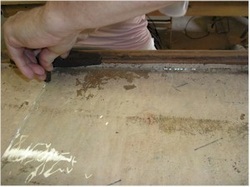
To cut using a t-square cutter, you'll need a wood strip attached to the edge of your work bench. It needs to be thicker than the edge of the cutter added to the thickness of the glass you're cutting, or it will rub on your glass as you cut.
Hold the cutter with both hands. You want to slide the cutter so that it stays against the wood guide and so that there is proper pressure against the glass.
Hold the cutter with both hands. You want to slide the cutter so that it stays against the wood guide and so that there is proper pressure against the glass.

Here, the two sides of the scored glass is held with both hands, which are then rocked apart to break the glass in two pieces.
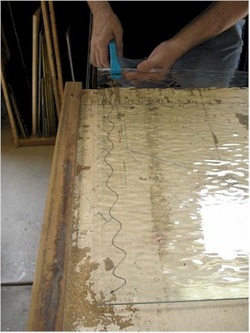
When you cut strips that are especially thin, you can use a pair of running pliers to break the glass. Set the jaws of the pliers which have a curved jaw directly over the score line. There is a line on top of the pliers to let you know which side is up.
When you squeeze the pliers, the curved jaw presses on the glass just like you do when rocking your hands apart and the glass will break easily.
When you squeeze the pliers, the curved jaw presses on the glass just like you do when rocking your hands apart and the glass will break easily.
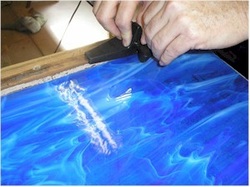
The most important skill when using a t-square cutter is keeping the cutter against the guide strip while keeping the proper pressure against the glass.
We dip the head of the cutter in cutting oil before scoring the glass to extend the life of the cutter.
We dip the head of the cutter in cutting oil before scoring the glass to extend the life of the cutter.

Here, the running pliers are in position to break the glass after it's been scored.

By using a jig to cut bevels, you can get a perfect cut. Place the beveled glass upside down so that the whole length of the bevel can be scored.
Hold each opposite side of the bevel down as you score the bevel so that the pressure doesn't tip the bevel up.
An article on making a jig can be found by clicking here.
Hold each opposite side of the bevel down as you score the bevel so that the pressure doesn't tip the bevel up.
An article on making a jig can be found by clicking here.

Hold the scored line across a sharp edge and place pressure on both sides of the bevel.

The two pieces will separate quite easily.

An alternative method to separating the two pieces of glass is by gripping each side of the glass close to the score line.
Don't try to squash the glass with the pliers, use the same rocking motion that you use when rocking your hands apart.
Don't try to squash the glass with the pliers, use the same rocking motion that you use when rocking your hands apart.

This method works very well with small pieces that are difficult to grip by hand.


